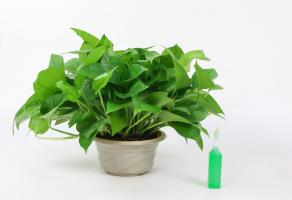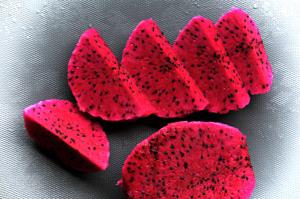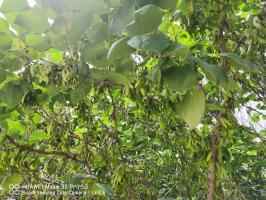Lvluo buries some bean dregs and climbs the wall for 100 meters
Huahua really likes spring. After all, the green rose at home is beginning to rub for a long time. At this time, whether you want to be a green rose pillar or let the green rose climb the wall, it is the best time

How to operate
1. After drinking soybean milk in the morning and evening, filter out the remaining soybean milk residue with a filter screen
2. Put the bean dregs in a plastic box and expose them to the sun. It only takes about 5-7 days, and all the water in the bean dregs can evaporate. At this time, grab it with your hand. If you find it can be kneaded into a ball, it is air dried
3. Seal the dehydrated bean dregs in plastic bags and ferment them in the sun at an interval of about 5-7 days. Open the plastic bags and have a look. There will be a lot of green mold on the surface of the bean dregs. Stir the bean dregs to continue fermentation. When they feel sticky, they will be fermented
4. Find a small shovel or spoon, dig 3-5 small holes along the edge of the green pineapple pot, plug the rotten soybean residue into the hole, and then bury it with earth
5. Soybean dregs contain a lot of nitrogen fertilizer, which is just suitable for green pineapple to absorb nutrients. If the green pineapple absorbs enough nitrogen fertilizer, its branches will become longer and longer. Isn't it easy to climb the wall
Gardenia bury some egg shells, and the leaves will never turn yellow again
Recently, many flower friends are buying gardenia, but why do gardenia, which has been raised for a while, turn yellow? Huahua teaches you a trick today. Bury some egg shells in the basin to prevent Gardenia leaves from turning yellow

How to operate
1. Collect all the remaining egg shells at home, wash them with clean water, and put them in the sun for disinfection. The egg shell contains the remaining egg white. If it is not cleaned, it will attract insects such as small black fly if it is buried in the basin
2. Smash the dried egg shell into powder with a small hammer or other things, and then put it in a small box for standby
3. Poke a few small holes along the edge of the Gardenia pot, bury the crushed egg shell in the pot, and then cover it with a thin layer of soil
4. The egg shell contains a lot of organic phosphorus, as well as calcium, iron, zinc, magnesium and other elements. It can slowly release nutrients in the Gardenia basin soil, which can not only prevent the yellow leaves of Gardenia caused by lack of iron and magnesium, but also supplement calcium ions and make the plant more robust
The rich tree buries some compound fertilizer, and the leaves are getting thicker and greener
After a winter's dormancy, the fortune tree began to grow in spring. The fortune tree in some flower friends' homes is very large, so it is very troublesome to change the pot, so they can only bury some compound fertilizer at the edge of the pot to promote growth

How to operate
1. Solid compound fertilizer is the best choice for compound fertilizer. The fertilizer contains a large amount of nitrogen, phosphorus and potassium, which can slowly release the fertilizer in the soil and will not burn the root at all. If there is agricultural urea at home, the fertilizer effect is very good
2. Next to the flowerpot of the fortune tree, poke 3-4 small holes with chopsticks. The depth of the small holes poked is about 3-5cm away from the soil surface, and then bury the compound fertilizer particles, 5-7 particles in each small hole
3. The compound fertilizer particles buried in the flower pot will slowly melt when watering. As the water penetrates into the soil, the roots of the fortune tree will continue to absorb, so that the fortune tree will grow faster and faster and grow taller
Clivia buries some waste oil, and its leaves are green and flowers bloom endlessly
Many flower friends reflect that why does my Clivia not bloom? It must be lack of nutrients! If you have waste oil at home, you can feed a spoonful of Clivia. It's better than flower promoter

How to operate
1. When cleaning the range hood, collect the waste oil into a small bowl for standby. The waste oil mentioned by Huahua is the waste oil of range hood, or the leftover soybean oil and peanut oil at home. Those waste diesel and engine oil can not be used
2. Find a chopstick or wooden stick, poke 3-small holes along the basin edge of Clivia, keep away from the root system, then pour the waste oil into the small hole with a small spoon, about 1 / 2-2 / 3, and then bury the small hole with soil. If the hole is filled with oil, the soil cannot be covered
3. The decomposition time of waste oil is very long, so you can use Clivia once in half a year. If you use too much, the soil will harden. Clivia has absorbed the nutrients in the waste oil, the leaves are greener and greener, and the flowers are more and more bright
The longevity flower buries some banana peel and keeps going
Many longevity flowers in Huayou's family have already had one crop. At this time, if you can supplement enough phosphorus and potassium fertilizer, you can make it continuously produce the second and third crops of flowers... What do you do? Come and have a look with Huahua

How to operate
1. Collect the leftover banana peel, put it on a porcelain plate, and then heat it in the microwave oven
2. When heating in the microwave oven, it can be heated for many times in a short time. If heated for a long time, the temperature will rise, which will easily lead to the combustion of banana peel and the loss of water after heating, but the phosphorus and potassium elements exist
3. Put the dried banana peel in a container, mash it with a small hammer or other hard thing until it is crushed into powder, and then put it in a small box for standby
4. Dig 3-5 small holes along the edge of the basin away from the root system of Changshou flower, scoop the banana peel powder with a small spoon, bury it in the small hole, and then cover the banana peel powder with soil
5. The banana peel powder buried in the basin soil will slowly release phosphorus and potassium. With the watering, it will penetrate into the deep soil and let the roots absorb it, so as to have enough nutrients to accumulate energy for the next flowering
Hupilan buries some cooked soybeans and pokes the roof in a month
Hupilan is a good flower to raise. Just to raise it to the extent of poking the roof, it still needs some work! Huahua's experience is to directly bury the cooked soybeans in the basin. The fertilizer effect is powerful

How to operate
1. Soak the moldy soybeans in warm water for about 24 hours. When you feel that the surface of soybeans is soft, put them in a pot to cook and let them cool for standby
2. Next to the flower pot of hupilan, far away from the root system, poke 2-4 small holes with a small wooden stick, and then bury the cooked soybeans. Just buy 5-7 at a time. The root system of hupilan is relatively shallow, so don't bury too much
3. Cooked soybeans are very rich in nitrogen, which will slowly release nitrogen in the soil and be absorbed by hupilan. If hupilan absorbs enough nutrients, it will grow higher and higher. It's no problem to poke the roof
That's all for Huahua today
Do you have any questions you don't understand
Welcome to leave a message to Huahua

 how many times do yo...
how many times do yo... how many planted tre...
how many planted tre... how many pine trees ...
how many pine trees ... how many pecan trees...
how many pecan trees... how many plants comp...
how many plants comp... how many plants can ...
how many plants can ... how many plants and ...
how many plants and ... how many pepper plan...
how many pepper plan...





























